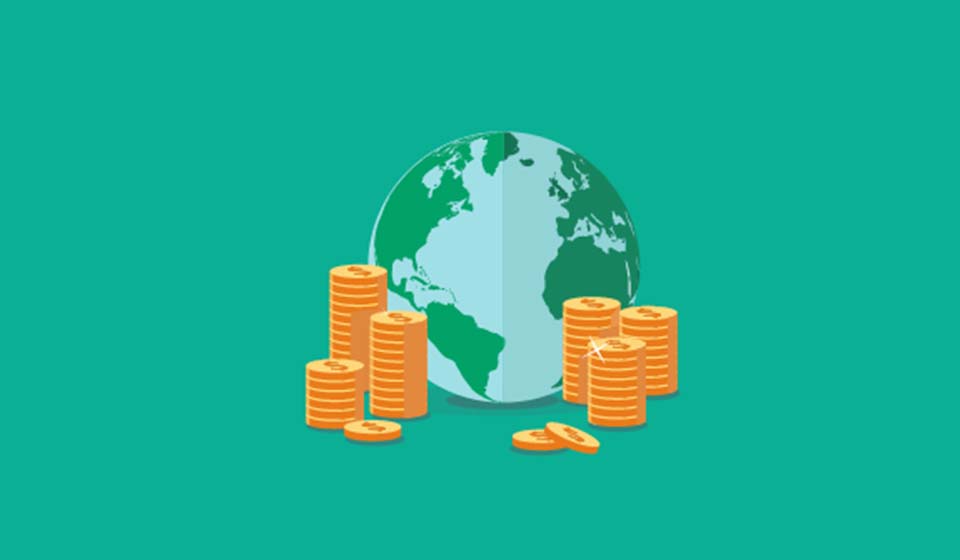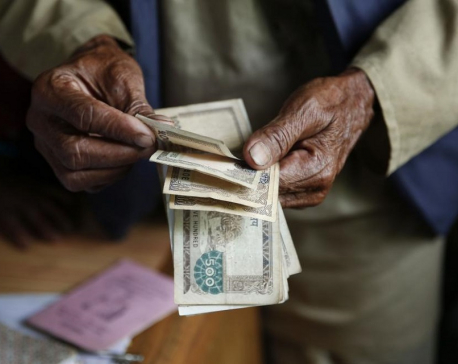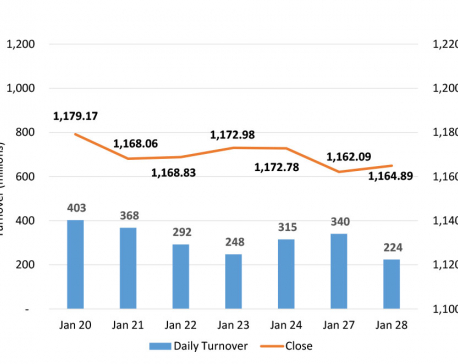
OR
Opinion
Major Risks Confronting the Nepalese Economy
Published On: January 29, 2024 08:00 AM NPT By: Hari Prasad Shrestha

In the face of a global economic downturn, most countries of the world will inevitably experience the repercussions of this phenomenon. As the economy transitions from the normalization observed at the end of last year to a state of turbulent ‘new-normality’ this year, the global economy is poised to decelerate amid the lingering impacts of tight monetary policy, restrictive financial conditions and sluggish global trade and investment. There is an escalation in disruptions within the commodity market, financial stress stemming from heightened debt and increased borrowing costs amid the impact of climate-related disasters.
Moreover, the recent conflict in the Middle East and war in Ukraine have heightened geopolitical risks. Escalation of these conflicts could lead to surging energy prices, with broader implications for global activity and inflation. There are indications that consumption, usually a driving force for growth, is not as strong as it used to be.
As a chain reaction of global economic disorders, Nepal’s economic position seems to be in high risk with unexpected challenges. Recently, the mid-term evaluation done by the Ministry of Finance also depicts a gloomy picture of the economy as the progress of all indicators, including revenue collection, capital expenditure, foreign aid and grant receipt, are far below the target. By the end of January, government finances were at a deficit of Rs 48.5 billion. Despite favorable conditions including a strong external sector, sufficient liquidity in the financial system, falling interest rates, the expected improvement in government finances has not been seen. More than 70 percent of the total budget has to be allocated just to manage salary allowances, social security, financial transfers, administrative expenses and the rising debt repayment obligations. Currently, major risks confronting the Nepalese economy are as follows:
Economic Slowdown
Nepal’s economy has been projected to grow by 4.3% (at market prices) in fiscal year 2024. This growth is not enough for satisfactory accomplishments in development and to cope with the businesses, unemployment, recession. Moreover, it would remain far short of the strength needed to achieve the Sustainable Development Goals. The alarming situation of the sustainability of the current economic system, the high cost of debt, and limited spending on people and infrastructure development would push the country under more uncertainties.
The manufacturing sector is supposed to slow down due to declining demands in the market and exports. The agriculture sector would face more challenges as a result of continued import of highly-subsidized Indian agri products with duty free entry. And this sector is going to slump due to the impact of disease on livestock and a decline in rice and paddy production. The annual monsoon rain strongly influences economic growth. Inflation is expected to remain elevated, weighing on people’s real disposable incomes and private consumption.
Foreign aid to Nepal accounts for more than half of the development budget and the regular budget is not enough even to meet the administrative expenses of the government. As a result of limited resources for the development projects and lower rate of capital expenditure, the development of social services and infrastructure sector would be below the expectations.
Surging Financial Stress
The high fluctuations in the financial sector can impact investments by affecting market demand, consumer spending power, and the overall economic environment, influencing the profitability and performance of stocks, bonds, real estate, and other investment assets. The combination of weak growth, high fluctuations in interest rates, and elevated debt levels could make servicing debt more difficult and vulnerable for Nepal. The accumulation of public debt may pose a sovereign credit risk, placing the government in an uneasy position with regards to its ability to meet its debt obligations.
Effect of Geopolitical Tension
Geopolitical tensions have become the most important risk confronting the Nepalese economy. In the current changed global scenario, external assistance is going to be more political and strategic rather than only economic. Due to rising geopolitical competitions between Nepal’s neighbors plus the US, there are possibilities of commitments of big investments in some strategic projects, however investments in the productive sector would remain under a big question mark. As a result of efforts to block each other's investment by big powers, Nepal’s economy would be more perplexed under their power play with increased complexities.
Trade Fragmentation
India is set to witness its next general election this year. The disruption in the international supply chain has also affected India. No government wins elections while fighting inflation. Food will always be a priority compared to fuel. The inflationary concerns have not eased yet and India has exhausted much of its surplus food stock and Nepal will be hardly hit by it.
Powerful neighbors are leading a slide towards subsidies, export controls and protection for import, which are against the inner norms of globalization. A growing number of trade restrictions, global trade fragmentation in the form of an increase in trade barriers and protective policy could lead to a widening trade gap for Nepal. Moreover, unauthorized trade would replace a substantial share of imports in Nepal.
Climate Change
Because of drought-depleted water levels in the Terai region, climate change has become one of the causes of moderate or severe food insecurity in Nepal. Climate change is increasing the frequency and cost of natural disasters, which tend to restrict economic growth, aggravate poverty, and lower agricultural yields.
Over-population is already straining the "carrying capacity" of the big cities, particularly the Kathmandu Valley, resulting in the depletion of forest cover for crops, fuel, and fodder and contributing to erosion and flooding. Floods and landslides would increase economic burdens as they have been the most frequent hazards and these events are expected to increase as climate change accelerates.
Conflicts in the Middle East
Nepal's GDP is heavily dependent on remittances (9.1%) sent by its citizens employed in overseas work. The war between Israel and Hamas is most likely to spread over neighboring countries. Two third of Nepalese laborers are employed in the Middle East countries and the share of remittances received from that region to Nepal is also more than fifty percent. The prolonged conflict not only affects employment and remittances but it would also impact tourism, trade, investment, and other financial activities in Nepal. Overall, oil prices have risen about 6 % since the start of the conflict. Prices of agricultural commodities, metals, and other commodities have barely budged.
These risks refer to the potential for adverse changes in economic conditions that can negatively impact businesses, industries, and other economic activities in Nepal. Its economy is survived by external factors while internal economic factors are weak and fragile. Therefore, it must be serious in implementing a new economic model to transform the economy for rapid growth and development as the current traditional model would hardly work anymore. To minimize the shocks of economic risks, the government with support of all concerned stakeholders, needs a better assessment and understanding of the potential impacts of these risks on economic performance, making informed decisions, diversifying investments, implementing risk mitigation strategies, and monitoring economic indicators.
You May Like This

Reshaping Nepal's Economic Landscape
Nepal, a buffer state between the two economic giants, India and China, struggles to maintain financial stability. Its strategic location... Read More...

Nepse ends slightly higher
KATHMANDU, Jan 29: Stocks posted marginal gains in initial trading hour on Monday. The Nepal Stock Exchange (Nepse) index wavered... Read More...

Economy of emotions
Let’s bring in remittance as much as we can through skills but not at the cost of our emotional wellbeing Read More...









Just In
- Forced Covid-19 cremations: is it too late for redemption?
- NRB to provide collateral-free loans to foreign employment seekers
- NEB to publish Grade 12 results next week
- Body handover begins; Relatives remain dissatisfied with insurance, compensation amount
- NC defers its plan to join Koshi govt
- NRB to review microfinance loan interest rate
- 134 dead in floods and landslides since onset of monsoon this year
- Mahakali Irrigation Project sees only 22 percent physical progress in 18 years










Leave A Comment